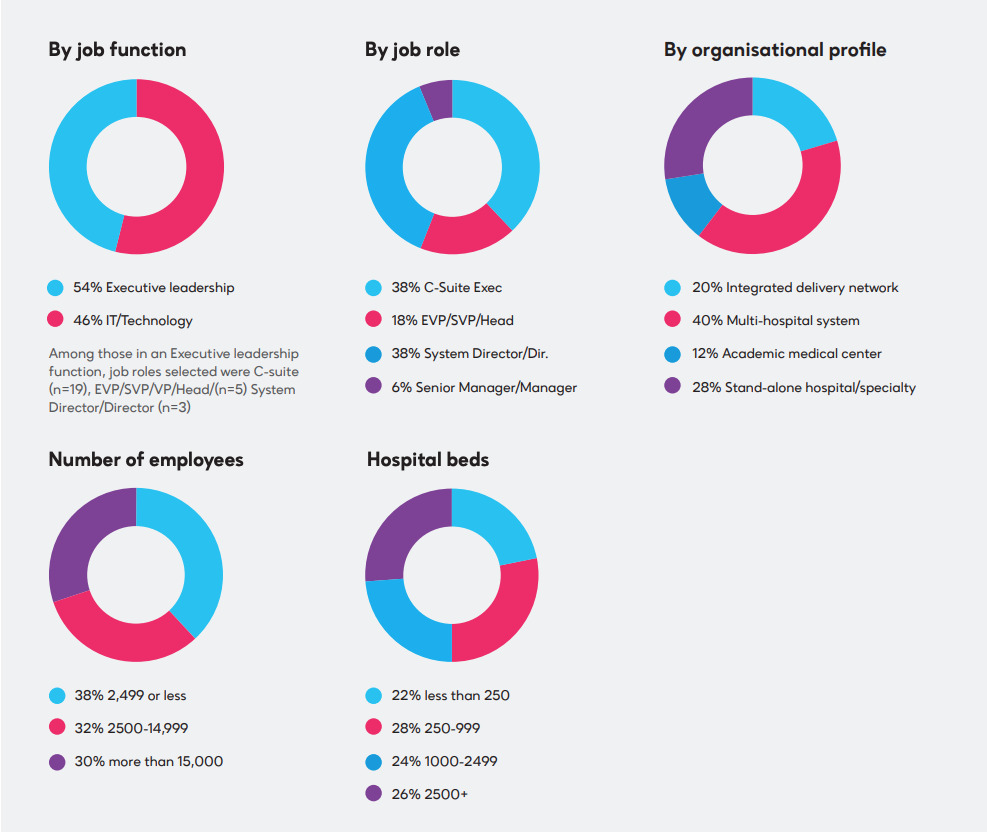While cloud technology has accelerated the development of video conferencing and telepresence in every industry, it has been mission critical in healthcare delivery. From establishing a virtual front door to full-blown telehealth solutions, technology has transformed what the healthcare industry looks like.
Despite a large portion of the healthcare industry adopting a hybrid model, operational cornerstones continue to be a challenge – namely efficient and effective communication and collaboration.
The aim of this study was to identify and understand the use of unified communications and collaboration (UCC) tools in the United States hospital and healthcare industry, including:
- to understand which platform(s) are currently being used
- to identify the challenges encountered while using the current platform(s)
- to identify the current types of usage of a performance management solution
The key findings uncovered in this report include:
- Organizations typically use more than one UCC platform in total, while Microsoft Teams is being used most often for employee collaboration. Organizations are using Microsoft Teams most often (76%), followed by Zoom (62%). On average, organizations use 2.56 different platforms for their communication and collaboration needs.
- Collaboration tools are used in a variety of ways by employees in the healthcare industry. Most healthcare employees are using collaboration tools for hybrid work (74%), compared to telehealth and virtual care (34%) and contact and call centers (20%).
- Challenges are seen across all communication and collaboration platforms. The most common challenges employees identified when using UCC tools include the inability to integrate into other workflows (38%), poor call and video quality (30%) and lack of training on how to use the tools (27%).
- Third-party vendors are used frequently for performance management solutions. Third-party vendors are used most often for monitoring and troubleshooting (40%) and understanding user/ patient experience (40%). Organizations with more than 2,500 employees are more likely to use a performance management solution for real time data analytics dashboards (32%) and gaining business insights (26%).
This study was conducted independently by global advisor, thought leader and member-based society HIMSS (Healthcare Information and Management Systems Society).
As a mission-driven nonprofit, HIMSS offers a unique depth and breadth of expertise in health innovation, public policy, workforce development, research and digital health transformation to advise leaders, stakeholders and influencers across the global health ecosystem on best practices. For an audience breakdown and overview of the research approach, see the appendix of this report.
Download a PDF copy of Hospitals and Health Systems in a Hybrid World
Performance management for the future of healthcare
Finding and solving communication and collaboration issues can be time-consuming and difficult. Performance management – monitoring, optimizing, and troubleshooting – is the insurance that ensures healthcare systems and hospital operations are up and running, identifying the root cause of problems, and effectively managing risk.
In the complex healthcare industry, effective, seamless communication is vital to ensure quality care, patient safety, improved patient outcomes, and improved operational efficiencies. Just as humans need health check-ups, healthcare providers must ensure that their technology is healthy and optimized for long-term high performance.
Simplify complexity to ensure the lines of communication are always open
IR Collaborate is an enterprise-grade performance and experience management solution for voice, video, collaboration, and contact center environments. Whether in the cloud, on-premises or hybrid, IR Collaborate makes it easy to manage the multivendor, multi-platform UC ecosystems modern healthcare providers rely on every day.
Organizations are using more than one collaboration platform
Health systems and hospitals now operate within a multi-vendor, multi-channel environment, adopting new technologies and strategies at an unprecedented pace, with higher agility and arguably lower thresholds for downtime.
This survey identified that it is common for organizations to utilize multiple UCC vendors. On average, organizations use 2.56 different platforms for their communication and collaboration needs.
It’s no surprise that three-in-four healthcare organizations are using Microsoft Teams for employee collaboration, as it is the most widely used collaboration tool across most industries. Larger organizations (locations with 1,000+ hospital beds) are also significantly more likely to utilize Microsoft Teams (88%).
Most popular collaboration platforms
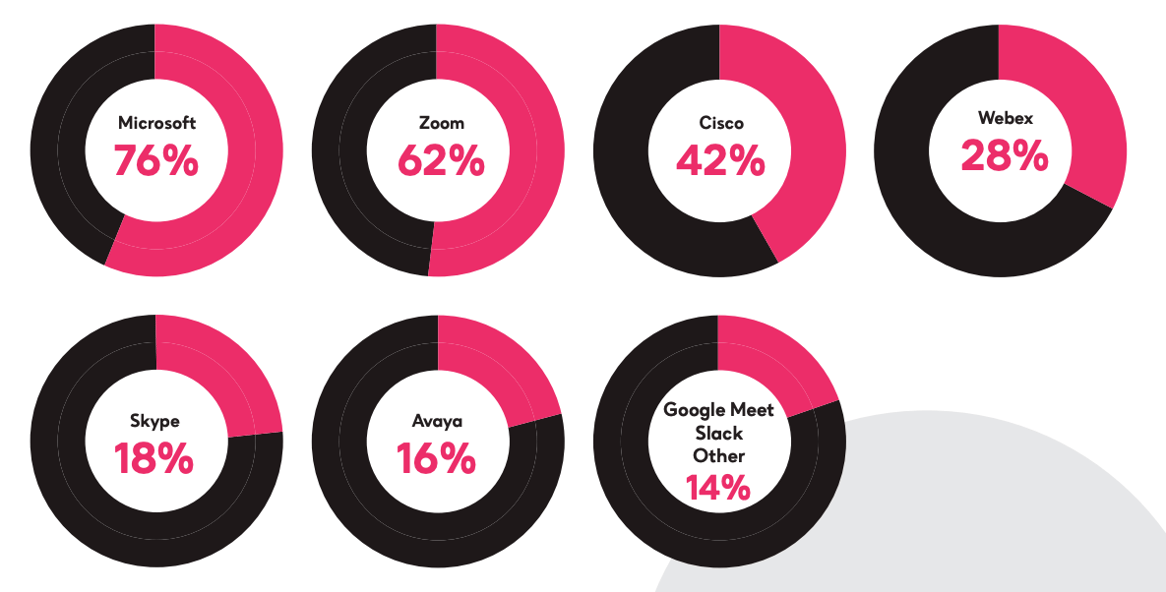
2.56 different platforms used for UCC needs
Hybrid integration
With the rise of telemedicine, virtual front doors, and hybrid care models, there is now a need for better integration between hybrid/virtual components and in-person workflows, particularly critical for hybrid care strategies combining virtual and in-person channels.
Collaboration tools are used in a variety of ways by employees in the healthcare industry
Most healthcare employees are using collaboration tools for hybrid work (74%), compared to telehealth and virtual care (34%) and contact and call centers (20%).
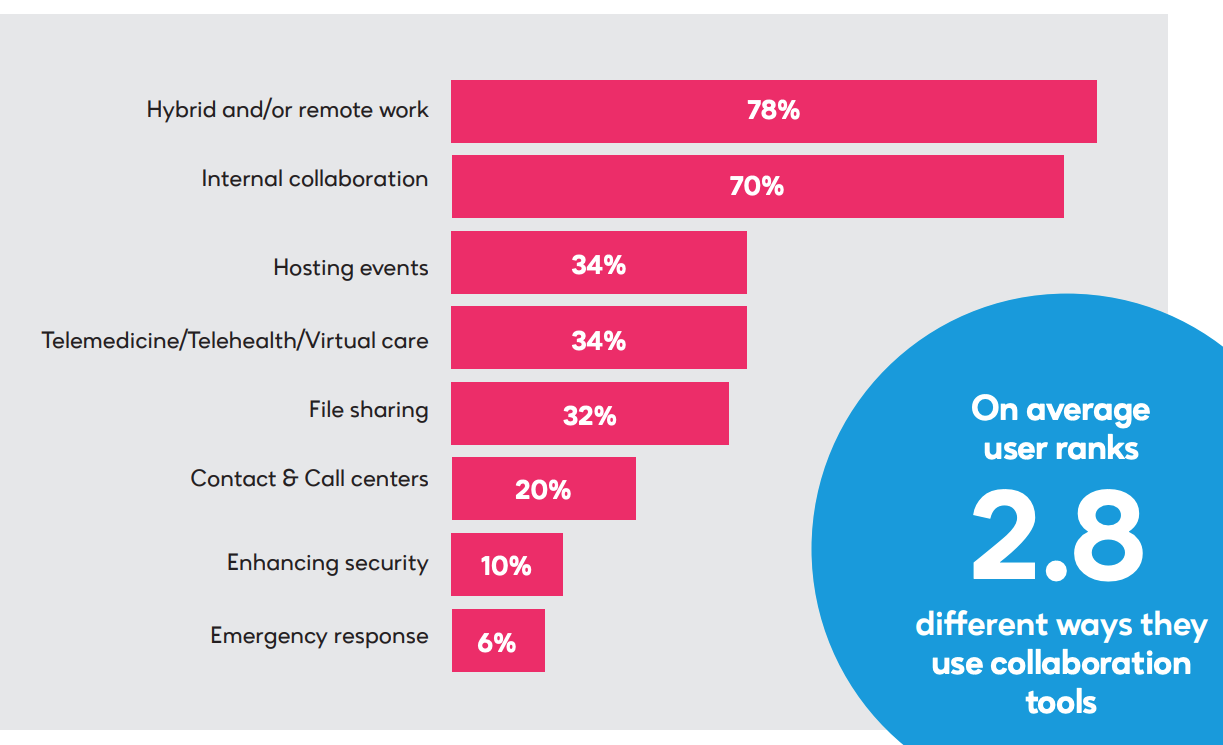
Facilitating more effective collaboration
Unified communication is no longer about connecting voice calls and video calls. These solutions also come with access to enhanced communication tools that allow professionals around the globe to collaborate more effectively in a hybrid working model.
Serving as a solid basis for transformation
There’s no question that enterprises would not exist without an effective communication and collaboration strategy, primarily involving gathering, exchanging, analyzing, and distributing information. Creating a solid communication and collaboration strategy today will enable healthcare operations to more easily and efficiently embrace new technologies.
Challenges are seen across all communication and collaboration platforms
In this new era of telemedicine, communications systems between healthcare providers and patients are complex and diverse, creating a complex environment that’s ripe for failure. Outdated and disconnected communication systems can lead to huge problems with productivity and performance and damage the efficacy of care.
This survey identified that the most common challenges employees face when using UCC tools include the inability to integrate into other workflows (38%), poor all and video quality (30%) and lack of training on how to use the tool (27%).
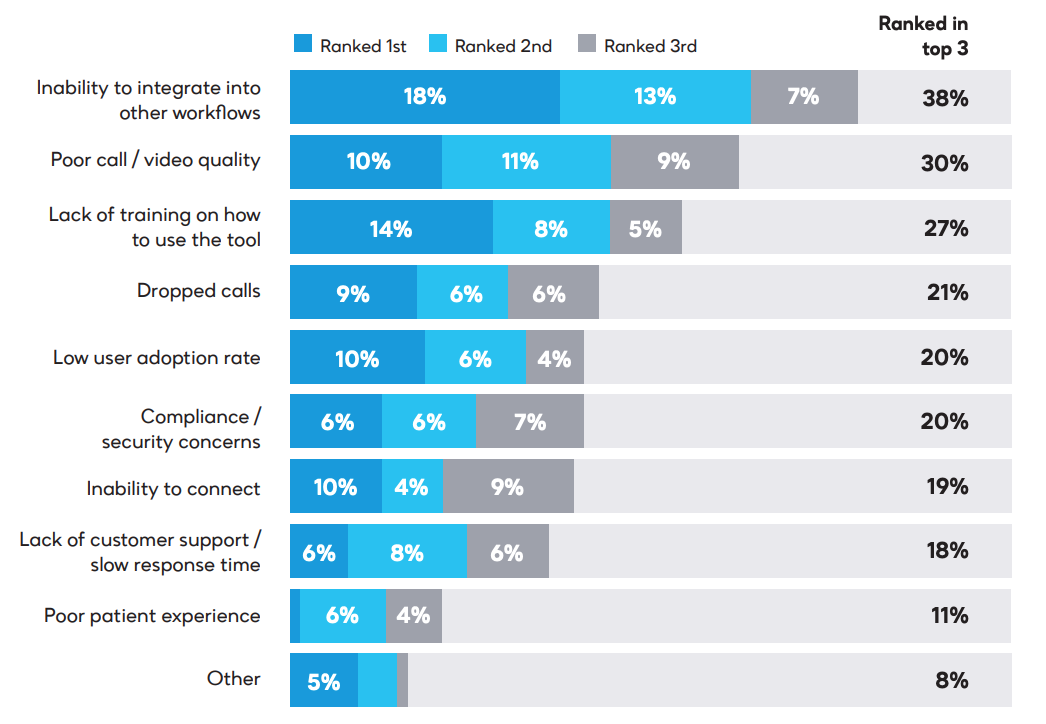
It’s important critical tools work as they should
To improve the human experience, healthcare must optimize the collaboration that connects their people and their patients. The results will reap benefits today and prepare the healthcare sector for a digitally transformed future.
Third-party vendors are used frequently for performance management solutions
This survey identified that third-party vendors are used most often for monitoring and troubleshooting (40%) and understanding user/patient experience (40%). Organizations with 2,500+ employees are also more likely to use a performance management solution for real time data analytics dashboards (32%) and gaining business insights (26%)
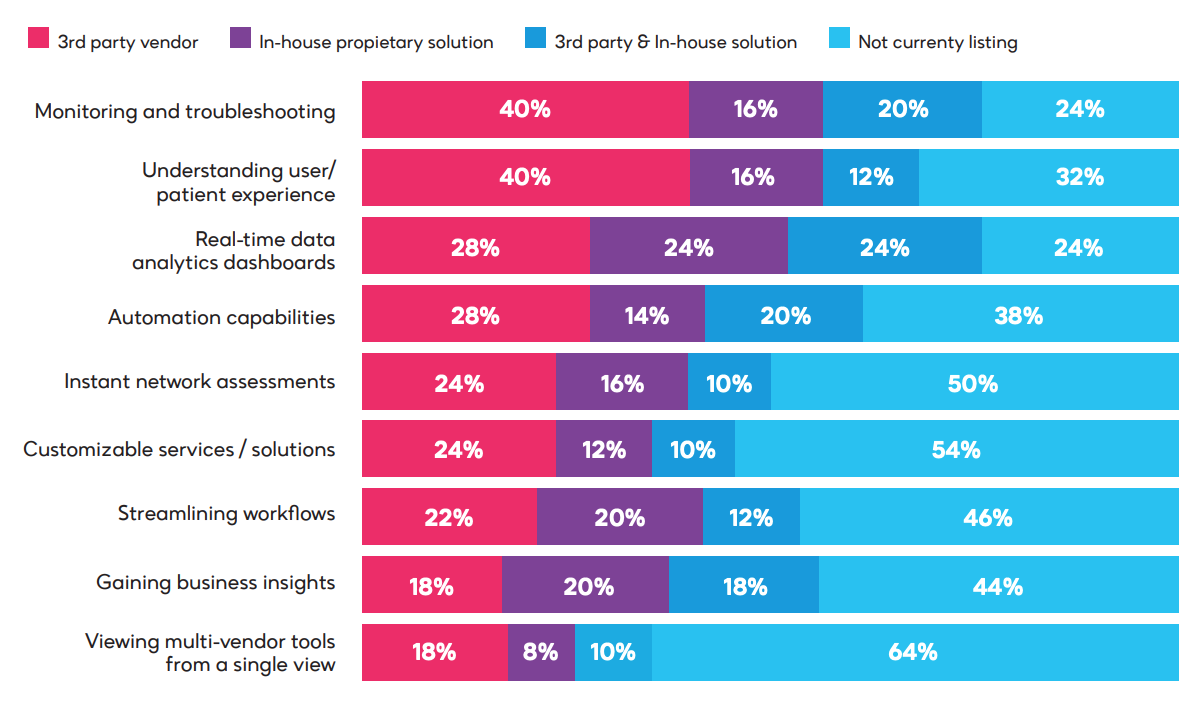
Locations with 2,500+ employees are more likely to use both third-party and in-house solutions for gaining business insights.
Ensuring efficiency
UC brings technology together into one easily visible environment. This enables hospitals and health systems to optimize the collaboration that connects their people and patients.
Creating a better patient experience
Optimizing the communication and collaboration environment that underpins hospitals and healthcare systems can have numerous benefits. Optimized UC empowers healthcare professionals not only to ensure ongoing, connected communications but also to monitor, identify, troubleshoot, and quickly resolve any issues before they become patient-facing.
Appendix
The approach
When was the research conducted: June 2022
Length of the survey: Average time taken to complete the survey was 9 minutes and 22 seconds
Total sample size: n=50 respondents
Who was included in the research: Respondents were screened for having a role in decision making or influencing regarding employee communication and collaboration ecosystems at their organization. Seniority across four levels:
- C-Suite Executive
- EVP/ SVP/VP or Head Of
- System Director or Director
- Senior Manager or Manager
Organizational profile:
- Multi-hospital system
- Academic medical centre
- Stand-alone hospital/speciality
- Integrated delivery network
Sample breakdown
